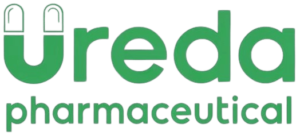In the realm of Good Manufacturing Practices (GMP), the question of whether the same individual can act as both the author and reviewer of a document is pivotal for maintaining compliance and operational excellence. This article delves deeply into the regulatory guidelines, industry norms, and practical implications of this critical issue.
Understanding the “Four-Eyes Principle” in GMP
The “four-eyes principle” is a cornerstone of quality assurance in GMP. It stipulates that at least two independent individuals should be involved in critical processes, including the creation and review of essential documents. This principle applies particularly to documents that:
- Serve as evidence of adherence to GMP standards.
- Underpin the Quality Management System (QMS).
- Are scrutinized by regulatory authorities, such as standard operating procedures (SOPs), batch records, and test reports.
For high-risk or highly sensitive documents, some companies even implement a “six-eyes principle,” involving an author, a reviewer, and an approver. This layered approach minimizes the likelihood of errors and ensures a robust quality assurance framework.
Regulatory Frameworks and Standards on Document Review
Globally recognized standards and guidelines underscore the necessity of independent review processes. Here’s a closer look at key regulatory references:
EU GMP Guidelines
- Chapter 4 – Principles: “Appropriate controls must ensure the accuracy, integrity, and traceability of documents.”
- Section 4.2: “Documents should be prepared, reviewed, and distributed with meticulous care.”
- Section 4.21(c): Emphasizes identifying both the operator performing critical tasks and the individual independently verifying them.
- Annex 13, Article 33: “Operations must adhere to GMP principles and be verified by a second individual.”
FDA 21 CFR Part 211
- Section 211.100(a): “Written procedures must be drafted, reviewed, and approved by relevant organizational units and further validated by the quality control unit.”
ISO Standards
- ISO 9001, Clause 4.2.3: Outlines that a controlled document must undergo a defined lifecycle of preparation, review, approval, and distribution.
- DIN EN ISO 9000: Highlights the significance of document traceability and oversight.
These guidelines collectively emphasize the importance of separating authorship and review to uphold the integrity and reliability of GMP documentation.
Why Independent Review is Essential
Mitigating Risks
Independent review acts as a safeguard against:
- Non-compliance with stringent regulatory requirements.
- Errors in documentation that could compromise product quality.
- Costly audit findings or penalties.
Enhancing Objectivity
A fresh set of eyes provides an impartial evaluation, ensuring clarity, accuracy, and alignment with compliance standards. This objectivity is invaluable in identifying issues that may be overlooked by the original author.
Meeting Regulatory Expectations
Regulatory bodies prioritize robust document control systems during inspections. Demonstrating adherence to independent review practices reinforces a company’s commitment to quality and regulatory compliance.
Practical Implementation Through SOPs
Organizations typically outline document review protocols in their SOPs. These include:
- Clear designation of roles for authors, reviewers, and approvers.
- Identification of document categories requiring strict adherence to the “four-eyes principle.”
- Guidelines for escalating critical documents for additional scrutiny.
For example, a standard SOP may dictate the following process:
- Drafting: Authors ensure the document aligns with regulatory and operational standards.
- Reviewing: Independent reviewers verify content accuracy and compliance.
- Approval: Approvers authorize the document for implementation, ensuring readiness.
Conclusion: The Role of the “Four-Eyes Principle” in Ensuring Excellence
While regulations may not universally prohibit an author from reviewing their own work, adhering to the “four-eyes principle” is a best practice in GMP. It enhances document reliability, fosters regulatory trust, and reinforces quality assurance. Companies can achieve this by:
- Establishing comprehensive SOPs.
- Fostering a culture of accountability and transparency.
- Seeking expert advice to align practices with evolving industry standards.
The “four-eyes principle” is more than a procedural requirement—it embodies the commitment to excellence and compliance that defines successful pharmaceutical and manufacturing operations.



